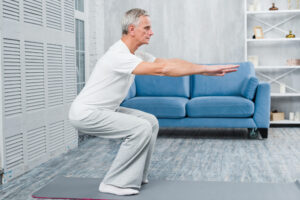In the quest for optimal fitness and weight management, calisthenics emerges as a promising contender. But how effective is this form of exercise really for losing weight? This guide embarks on a detailed exploration of calisthenics, dissecting its principles and practices to determine whether it can truly serve as an effective weight loss tool. We’ll delve into the mechanics of calisthenics workouts, and evaluate their benefits.
What is the calisthenics type of workout?
Calisthenics involves a variety of movements that aim to increase body strength, body fitness, and flexibility using only one’s body weight for resistance. Typical exercises include push-ups, pull-ups, squats, and dips, along with more dynamic movements like jumps and sprints.
Benefits of calisthenics
Calisthenics offers a comprehensive range of health benefits that make it a compelling choice for individuals of all fitness levels.
Full body workouts
Unlike some forms of exercise that target specific muscle groups, calisthenics involves multi-joint movements that engage the entire body. This holistic approach ensures that no muscle group is neglected.
Improved muscular and cardiovascular fitness
Calisthenics exercises are exceptional for building muscular endurance and cardiovascular fitness. The repetitive nature of movements such as jumping jacks or high knees increases heart rate, promoting heart health and increasing stamina.
Flexibility and mobility
Flexibility and mobility are crucial components of a well-rounded fitness routine, often overlooked in traditional weightlifting. Calisthenics incorporates stretching and dynamic movements that enhance the joint range of motion and reduce the risk of injuries.
How calisthenics burns calories
The calorie-burning aspect of calisthenics is rooted in its high-intensity, dynamic movements that elevate the heart rate. Exercises like burpees, jump squats, and mountain climbers engage multiple muscle groups simultaneously, requiring more energy and thus consuming more calories.
Moreover, the versatility of calisthenics allows for quick transitions between exercises with minimal rest, which maintains a higher heart rate and promotes a more significant calorie burn. This constant activity mimics a high-intensity interval training (HIIT) session, known for its fat-burning capabilities.
The post-exercise period is also crucial in calisthenics; it leads to what is known as the ‘afterburn effect‘ or excess post-exercise oxygen consumption (EPOC). This effect means that the body continues to burn calories at an elevated rate even after the workout has ended. The intensity of calisthenics workouts triggers this response, boosting overall calorie expenditure throughout the day, which is vital for weight loss.
Comparing calisthenics with other workouts
Calisthenics is celebrated for its ability to provide a comprehensive workout by engaging the entire body in every routine. Unlike traditional weightlifting that often focuses on isolated muscle groups, calisthenics distributes the effort across the body, promoting muscle growth and potential fat loss in a balanced manner. This accessibility and versatility, requiring no special equipment, make calisthenics a practical choice for those seeking a flexible fitness routine they can perform anywhere.
However, when compared to cardiovascular exercises such as running or cycling, calisthenics might not always match up in terms of sheer calorie-burning effectiveness. Cardio workouts are particularly efficient at increasing heart rate and maintaining it at a high level for extended periods, which can lead to a higher total calorie burn over the same amount of time. While calisthenics does involve aerobic activity and can burn calories effectively, its primary strength lies in muscle building and enhancing physical strength rather than optimizing calorie expenditure.
The muscle-building aspect of calisthenics should not be underestimated though. Muscle tissue does burn more calories at rest than fat tissue, which means calisthenics can help improve metabolic rate and support long-term weight management. However, if the primary goal is to maximize calorie burn, incorporating higher-intensity cardio sessions alongside calisthenics routines might yield quicker results in weight loss.
Final thoughts
Calisthenics stands out as a versatile and effective form of exercise that caters to a wide range of fitness goals, including weight loss. By engaging the entire body through dynamic movements, it not only helps build muscle and improve cardiovascular health but also enhances flexibility and mobility.
While calisthenics can significantly contribute to calorie burning, it’s important to remember that combining it with cardiovascular exercises might be more effective for those specifically aiming to maximize weight loss. This integration helps harness the strengths of both calisthenics and cardio, ensuring a comprehensive approach to fitness that yields better results in terms of fat loss and overall health improvement.
If you’re looking to embark on a weight loss journey and need guidance on how to effectively combine calisthenics with other forms of exercise, or if you’re searching for a supportive community to keep you motivated, consider visiting HiTone Fitness Fayetteville.







